Ireland can be considered relatively expensive to live, visit, and study compared to some other countries. The cost of living, including housing, groceries, transportation, and healthcare, tends to be higher than in many European countries.
Visiting Ireland can also be pricey, especially during peak tourist seasons, with accommodation, dining, and transportation costs contributing to overall expenses. Similarly, studying in Ireland may come with significant tuition fees and living expenses, although there are scholarships and financial aid options available. While Ireland offers a high quality of life and vibrant cultural experiences, budgeting and careful planning are essential to manage costs effectively.
Ultimately, whether Ireland is expensive to live, visit, or study depends on your individual circumstances, budget breakdown and preferences. By understanding the costs involved and planning accordingly, you can enjoy all that Ireland has to offer while staying financially responsible and ensuring a rewarding experience in the Emerald Isle.
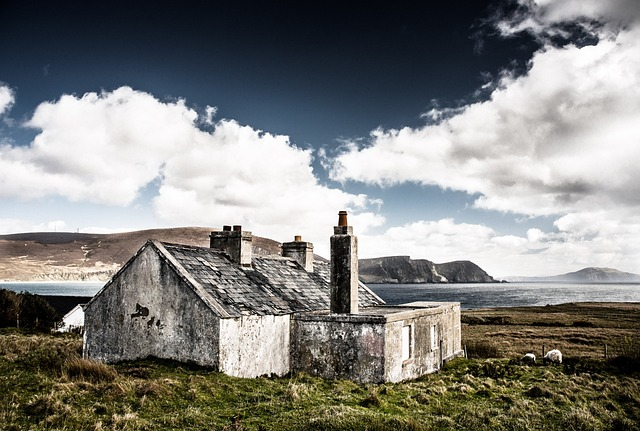
Is It Expensive To Visit Ireland?
Yes, it can be expensive to visit Ireland, but the cost can vary depending on your travel style and choices. Major expenses include accommodation, food, transportation, and activities. Staying in hotels, dining at restaurants, and participating in guided tours can add up quickly.
Accommodation costs can be a significant factor in your travel insurance overall budget. While there are options ranging from luxury hotels to budget hostels, prices tend to be higher in popular tourist destinations and during peak seasons.
Dining out can also be pricey, especially in tourist hotspots and major city like Dublin. However, you can save money by seeking out local pubs and eateries that offer hearty meals at more affordable prices.
Transportation costs, including flights, trains, and rental cars, should also be factored into your budget. While flights to Ireland can be expensive, especially during peak travel seasons, you may find deals by booking in advance or being flexible with your travel dates.
Overall, while Ireland can be expensive to visit, careful planning and budgeting can help make extra cost of your trip more affordable without sacrificing the experience.
Visiting Cork? Here are Best Things to do in Cork Ireland: Awesome Places To Visit, Outdoor Activities to Do

Is Ireland Expensive for Tourists?
Yes, Ireland can be expensive for tourists, but costs can vary depending on travel choices and preferences. Here are some key factors to consider:
-
Accommodation: Hotel prices in popular cities like Dublin and Galway can range from €100 to €250 per night for midrange options. Budget accommodations, such as hostels, may cost around €20 to €50 per night.
-
Food and Drink: Dining out can be pricey, with average meal prices at restaurants around €15 to €30 per person. Pubs and casual dining spots offer more affordable options. A pint of beer typically costs about €5 to €6.
-
Transportation: Public transport is relatively affordable, with a single bus ticket in Dublin costing around €2.50. Renting a car can be more expensive, with prices starting at about €30 per day, plus fuel costs (€1.50 per liter).
-
Attractions: Many attractions, such as the Cliffs of Moher and various national parks, have reasonable entry fees or are free to visit. However, some popular sites, like the Guinness Storehouse, have entrance fees of about €25 for adults.
-
Shopping: Prices for souvenirs, clothing, and other goods are generally comparable to other Western European countries. Budget conscious travelers can find deals in local markets and discount stores.
-
Entertainment and Leisure: Activities such as guided tours, concerts, and theater shows can add to the cost. For example, a ticket to a traditional Irish music show might cost around €20 to €30.
Visiting Dublin? Here are Best Things To Do In Dublin Ireland: In Depth Guide for 2024

Is Ireland Expensive To Live?
Yes, Ireland is expensive to live in, particularly in major cities like Dublin. Here are some data and facts to consider:
-
Housing: Renting in Dublin is notably expensive, with average monthly rents for a one bedroom apartment in the city center around €1,800. Outside the city center, this can drop to around €1,500. Buying property is also costly, with average prices for a city center apartment around €4,500 per square meter.
-
Utilities: Basic utilities (electricity, heating, cooling, water, garbage) for an 85m² apartment typically cost around €150 per month. Internet services average around €50 per month.
-
Food and Groceries: Groceries are relatively affordable, but eating out can be pricey. A meal at an inexpensive restaurant costs about €15, while a three course meal for two at a midrange restaurant can cost around €60.
-
Transportation: Public transportation is affordable, with a monthly pass in Dublin costing around €120. Owning a car involves additional costs, such as fuel (€1.50 per liter), insurance, and maintenance.
-
Healthcare: Healthcare can be expensive, with visits to a general practitioner costing around €50 to €70 without insurance. Many residents opt for private health insurance, which can cost upwards of €1,200 annually.
-
Education: If you have children, public schools are free, but private schools can be quite costly, with fees ranging from €5,000 to €20,000 per year.
-
Entertainment and Leisure: Going out for a movie costs around €12 per ticket. A pint of beer at a pub costs about €5 to €6, while a gym membership averages around €40 to €60 per month.
Visiting Limerick? Here are Best Things to do in Limerick Ireland
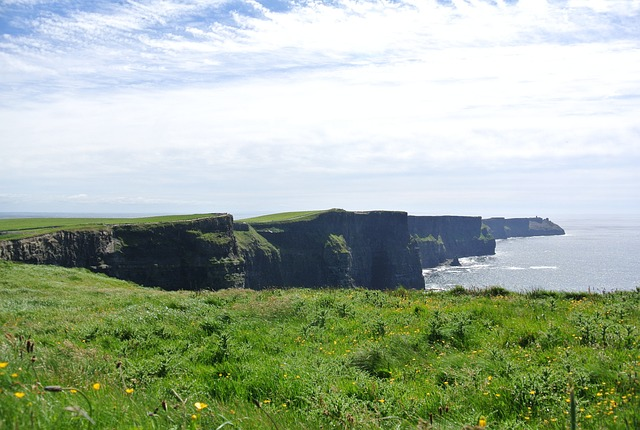
Is Northern Ireland Expensive?
Yes, Northern Ireland can be considered relatively expensive, but costs can vary depending on your travel choices. Here are some data and facts to consider.
-
Accommodation: Hotel prices in major cities like Belfast can range from £70 to £150 per night for midrange options. Budget accommodations, such as hostels, may cost around £20 to £40 per night.
-
Food and Drink: Eating out can be pricey, with average meal prices at restaurants around £10 to £20 per person. Pubs and casual dining spots offer more affordable options. A pint of beer typically costs about £4 to £5.
-
Transportation: Public transport is relatively affordable, with a day pass for buses in Belfast costing around £4. Renting a car can be more expensive, with prices starting at about £25 per day, plus fuel costs.
-
Attractions: Many attractions, such as the Giant's Causeway, offer free entry, though parking fees may apply (around £10). Paid attractions, like the Titanic Belfast museum, have entrance fees of about £19 for adults.
-
Shopping: Prices for clothing, souvenirs, and other goods are generally in line with those in the rest of the UK. Budget conscious travelers can find deals in local markets and discount stores.
Are Houses in Ireland Expensive
Yes, houses in Ireland can be considered expensive, particularly in major cities like Dublin. The housing market in Ireland has seen significant price increases over the past few years, driven by high demand and limited supply.
In Dublin, the average price for a home can be quite steep. For instance, buying a house in the city center can cost around €4,500 per square meter, while outside the city center, prices are slightly lower but still considerable. The high cost of housing extends beyond Dublin to other popular cities such as Cork and Galway, although the prices there are somewhat lower compared to the capital.
Renting is also costly, with average monthly rents for a one bedroom apartment in Dublin city center around €1,800, and even outside the city center, rents can be approximately €1,500 per month. These high housing costs make it challenging for many people, especially young professionals and families, to afford living in Ireland's urban areas. However, living in smaller towns and rural areas can offer more affordable housing options, although this often comes with tradeoffs in terms of job opportunities and access to amenities.
Factors contributing to the high cost of housing in Ireland include:
-
Limited supply: Despite efforts to increase housing construction, there continues to be a shortage of available properties, particularly in urban areas.
-
High demand: Ireland's growing population, coupled with an influx of international migrants and students, has contributed to increased demand for housing.
-
Government policies: Policies such as the Help to Buy scheme and first time buyer grants aim to support homebuyers but may also contribute to rising property prices.
Overall, while housing in Ireland can be expensive, there are options available for buyers and renters alike. It's essential to research the market, set a budget, and consider your long term housing needs before making a decision.
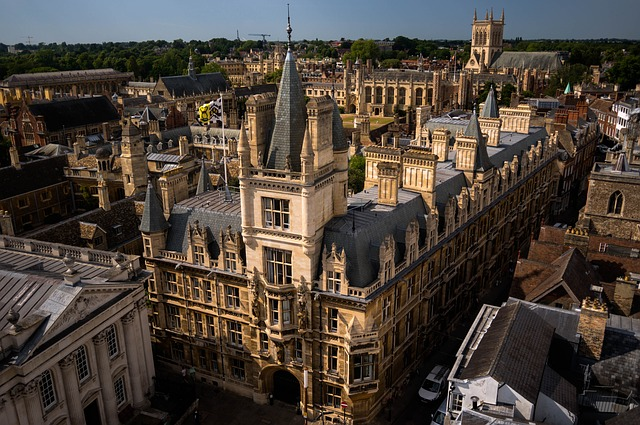
Is It Expensive To Study in Ireland?
Yes, studying in Ireland can be expensive, with tuition fees, accommodation, and living expenses contributing to the overall cost. Ireland has become an increasingly popular destination for international students seeking high quality education in a vibrant and welcoming environment. But how expensive is it to study in Ireland?
Tuition Fees
Tuition fees for international students in Ireland can vary depending on factors such as the course, institution, and level of study. Generally, undergraduate programs tend to pay to be more affordable than postgraduate programs, with fees ranging from a few thousand euros to over €20,000 per year.
Living Expenses
In addition to tuition fees, international students must budget for living expenses such as accommodation, food, transportation, and healthcare. The cost of living in Ireland is generally higher than in many other European countries, particularly in major cities like Dublin and Cork.
Accommodation
Housing costs can be a significant expense for international students, especially in urban areas where demand for rental properties is high. Many universities offer on campus accommodation options, but these can be limited and may fill up quickly. Off campus housing, such as shared apartments or private rentals, may be more affordable but require careful planning and research.
Scholarships and Financial Aid
Fortunately, there are scholarships and financial aid options available to help offset the cost of studying in Ireland. Many universities offer merit based scholarships, while government agencies and private organizations may also provide funding opportunities for international students.
Part Time Work
International students in Ireland are permitted to work part time during their studies, allowing them to earn extra income to cover living expenses. However, it's essential to balance work commitments with academic responsibilities to ensure academic success.
Overall, while studying in Ireland can be expensive, the country's high quality education system, rich cultural heritage, and opportunities for personal and professional growth make it a worthwhile investment for many international students.
Is Ireland Expensive for International Students?
Yes, Ireland can be expensive for international students, but the cost can vary depending on factors such as location, lifestyle, and course of study. Here are some key points to consider.
1. Tuition Fees
-
Undergraduate courses: €10,000 to €25,000 per year
-
Postgraduate courses: €10,000 to €35,000 per year
-
Fees vary by field of study and university
2. Accommodation
-
Dublin city center: €1,800 per month for a one bedroom apartment
-
Outside Dublin city center: €1,500 per month for a one bedroom apartment
-
Other cities (Cork, Galway): Lower than Dublin but still substantial
3. Living Expenses
-
Average monthly living expenses (excluding rent): €800 to €1,200
-
Includes food, transportation, and personal costs
4. Transportation
-
Public transportation is relatively affordable with student discounts
-
Example: Student monthly pass in Dublin costs around €100
5. Healthcare
International students are required to have private health insurance
Health insurance cost: €100 to €600 per year, depending on coverage
6. Benefits
-
High Quality education
-
Vibrant cultural scene
-
Opportunities to work part time during studies
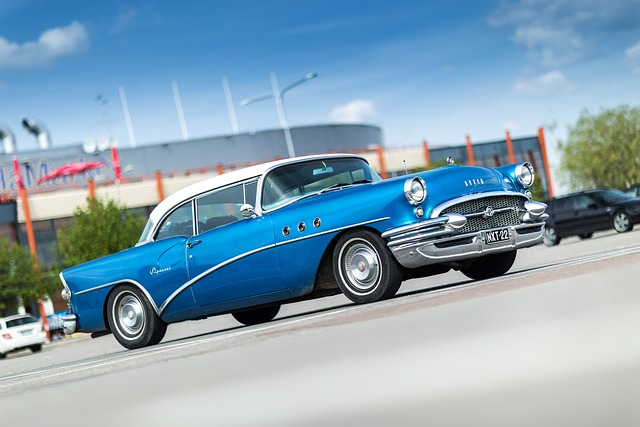
Is It Expensive To Rent a Car in Ireland?
Yes, renting a used rental car here in Ireland is expensive, particularly during peak tourist seasons and at airport locations. Renting a car in Ireland can be a convenient way to explore the country's scenic landscapes and historic sites. But how expensive is it to rent a car in Ireland?
-
Rental Costs: The cost of renting a car in Ireland varies depending on factors such as the type of vehicle, rental duration, and rental location. Generally, car rental rates are higher during peak tourist seasons and may be more expensive at airport locations compared to city centers.
-
Insurance: When renting a car in Ireland, it's essential to consider insurance coverage, which can significantly impact the total cost of your rental. Most rental companies offer collision damage waiver (CDW) and theft protection (TP) insurance as standard with car rentals, but additional coverage options may be available for an extra fee.
-
Fuel Costs: Fuel prices in Ireland can be higher than in some other European countries, so it's important to budget for fuel costs when renting a car. Petrol (gasoline) and diesel are the most common types of fuel available, with prices fluctuating based on market conditions.
-
Additional Fees: Be aware of additional fees that may apply when renting a car in Ireland, such as airport surcharges, underage driver fees, and one way rental fees. These fees can add up quickly, so be sure to read the rental agreement carefully and ask about any potential extra costs before booking.
Overall, while renting a car in Ireland can be expensive, it offers the flexibility of unlimited travel, and freedom to explore the country at your own pace. By comparing rental rates, choosing the right insurance coverage, and planning your itinerary carefully, you can minimize costs and make the most of your Irish adventure.
Are Taxis Expensive in Ireland?
Yes, taxis in Ireland can be considered expensive, especially compared to other forms of public transportation. Here are some key points to consider.
1. Initial Fare
-
Daytime (Standard): Starting fare around €4.20
-
Nighttime and Public Holidays: Starting fare around €4.80
2. Per Kilometer Charge
-
Daytime (Standard): Approximately €1.10 per kilometer
-
Nighttime and Public Holidays: Approximately €1.40 per kilometer
3. Waiting Time
-
Charged per minute while the taxi is stationary or moving slowly
-
Average cost around €0.40 per minute
4. Additional Charges
-
Booking fee for phone or app bookings: Usually around €2
-
Extra passengers or luggage: Small additional fees may apply
5. Airport Transfers
-
From Dublin Airport to city center: Around €25 to €35, depending on traffic and time of day
-
From Cork Airport to city center: Around €15 to €25
6. Alternative Options
-
Public transport (buses, trams, trains) is generally more affordable
-
Ridesharing services like Uber and Lyft may offer competitive rates
While taxis provide convenience and comfort, particularly for latenight travel or for shorter trips when carrying heavy luggage, their costs can add up quickly. Using public transportation or ridesharing services can help manage travel expenses more effectively.
Is Ireland More Expensive Than the UK?
Yes, Ireland is generally more expensive than the UK. This is due to higher costs of living, including housing, groceries, transportation, and healthcare. While both countries share similarities, Ireland's smaller size and higher demand for housing contribute to its overall higher cost of living compared to the UK. When comparing the cost of living in Ireland to that in the UK, several factors must be considered, including housing, groceries, transportation, and healthcare.
1. Cost of Living
-
Ireland's overall cost of living is higher than in the UK. For example, consumer prices in Dublin are about 1015% higher than in London.
-
Groceries and dining out are more expensive in Ireland. A midrange three course meal for two people costs around €70 in Dublin, compared to approximately £55 in London.
2. Accommodation
-
Rental prices are significantly higher in Ireland, especially in Dublin. The average monthly rent for a one bedroom apartment in Dublin city center is around €1,800, while in London, it's approximately £1,700.
-
Property prices are also higher in Ireland. In Dublin, the average price per square meter to buy an apartment in the city center is about €4,500, compared to around £10,000 in central London.
3. Utilities and Transportation
-
Utility costs, including electricity, heating, cooling, water, and garbage, for an 85m² apartment are roughly €150 per month in Dublin, compared to about £150 in London.
-
Public transportation is generally more affordable in the UK. A monthly public transport pass in Dublin costs around €120, while in London, it’s approximately £140 for Zone 12 travel.
4. Healthcare
Healthcare is generally more affordable in the UK due to the National Health Service (NHS), which provides free healthcare at the point of use. In Ireland, private health insurance is common and can cost between €1,000 to €1,500 annually.
5. Education
Tuition fees for international students can be higher in Ireland. Undergraduate courses range from €10,000 to €25,000 per year, while in the UK, they typically range from £10,000 to £20,000 per year for international students.
6. General Expenses
Everyday expenses such as clothing, entertainment, and personal care products are generally more expensive in Ireland compared to the UK.
Is Australia More Expensive Than Ireland?
Yes, Australia can be considered more expensive than Ireland, but the cost of living varies depending on specific factors such as housing, groceries, transportation, and lifestyle choices. Here are some key comparisons.
1. Cost of Living
-
Australia’s overall cost of living can be higher than in Ireland, particularly in major cities like Sydney and Melbourne. Consumer prices in Sydney are about 510% higher than in Dublin.
-
Groceries and dining out tend to be more expensive in Australia. A midrange threecourse meal for two people costs around AUD 90 (approximately €55) in Sydney, compared to approximately €70 in Dublin.
2. Accommodation
-
Rental prices are significantly higher in major Australian cities. The average monthly rent for a onebedroom apartment in Sydney city center is around AUD 2,800 (approximately €1,700), while in Dublin, it’s about €1,800.
-
Property prices are also high in Australia. In Sydney, the average price per square meter to buy an apartment in the city center is about AUD 13,000 (approximately €7,800), compared to around €4,500 in Dublin.
3. Utilities and Transportation
-
Utility costs, including electricity, heating, cooling, water, and garbage, for an 85m² apartment are roughly AUD 250 (approximately €150) per month in Sydney, similar to Dublin’s costs.
-
Public transportation is relatively affordable in both countries. A monthly public transport pass in Sydney costs around AUD 150 (approximately €90), while in Dublin, it’s around €120.
4. Healthcare
Healthcare costs in Australia can be higher due to the private healthcare system. However, Australia also has a public healthcare system, Medicare, which provides free or subsidized health care to residents.
In Ireland, private health insurance is common and can cost between €1,000 to €1,500 annually.
5. Education
-
Tuition fees for international students in Australia can be quite high. Undergraduate courses range from AUD 20,000 to AUD 45,000 per year (approximately €12,000 to €27,000), while in Ireland, they typically range from €10,000 to €25,000 per year.
-
Postgraduate courses in Australia can range from AUD 22,000 to AUD 50,000 per year (approximately €13,000 to €30,000), compared to €10,000 to €35,000 per year in Ireland.
6. General Expenses
Everyday expenses such as clothing, entertainment, and personal care products can be more expensive in Australia compared to Ireland. For example, a pair of jeans costs around AUD 100 (approximately €60) in Sydney, compared to about €70 in Dublin.
Is Food Expensive in Ireland?
Yes, food in Ireland can be considered expensive, especially when dining out. Here are some key points to consider.
1. Groceries
Overall Costs: Grocery prices in Ireland are relatively affordable meals still high compared to other European countries. Basic items such as bread, milk, and eggs can cost more.
-
A liter of milk: Approximately €1
-
A loaf of bread: Around €1.50
-
A dozen eggs: About €3
-
A kilogram of chicken breast: Approximately €9
-
Fresh produce like fruits and vegetables also tend to be on the higher side.
2. Dining Out
-
Restaurant Meals: Eating out at restaurants can be quite pricey.
-
A midrange three course meal for two people: Around €70
-
A meal at an inexpensive restaurant: Approximately €15 to €20
-
A combo meal at a fastfood restaurant: Around €8 to €10
3. Pubs and Cafes
-
Alcoholic beverages, such as a pint of beer, typically cost between €5 to €6.
-
A sandwich or a light meal in a cafe can range from €5 to €10.
4. Specialty and Imported Foods
Specialty items and imported foods are more expensive due to import taxes and higher demand.
Why Are Flights to Ireland So Expensive?
Flights to Ireland can be expensive, especially during the summer months, peak travel seasons and holidays. Several factors contribute to the high cost of airfare to Ireland, including:
-
Seasonality: Flights to Ireland tend to be more expensive during peak travel seasons, such as summer and major holidays, when demand is high. Booking your flight well in advance or being flexible with your travel dates can help you secure lower fares.
-
Limited Competition: Ireland is served by a limited number of airlines, particularly for longhaul flights from destinations outside Europe. This lack of competition can result in higher prices, as airlines have more control over fares.
-
Airport Taxes and Fees: Airports in Ireland impose various taxes and fees on passengers, which are included in the overall cost of airfare. These fees can vary depending on factors such as the airport of departure, ticket class, and airline.
-
Fuel Prices: Fluctuations in fuel prices can impact the cost of air travel, as airlines pass on these costs to passengers through higher ticket prices. Factors such as geopolitical tensions and supply chain disruptions can contribute to volatility in fuel prices.
-
Exchange Rates: Exchange rate fluctuations can affect the cost of flights for international travelers, particularly if the value of their home currency weakens against the euro. Keeping an eye on exchange rates and booking flights when the currency is favorable can help you save money on airfare.
Overall, while flights to Ireland can be expensive, there are ways to find the best deals, and save money on airfare. By booking in advance, being flexible with your travel dates, and comparing prices across different airlines and travel websites, you can minimize costs on budget airlines and make your trip to Ireland more affordable.
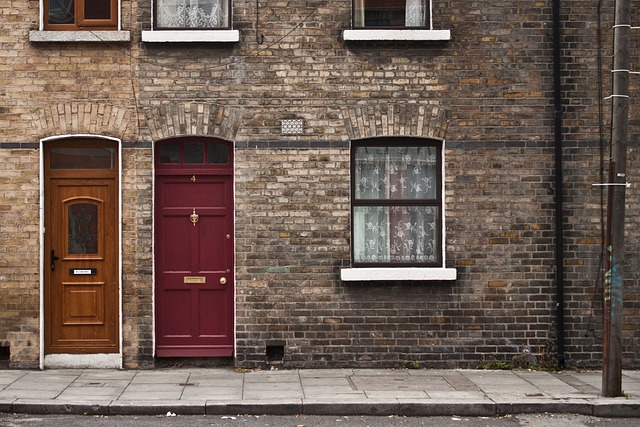
Least Expensive Place To Live in Ireland
The least expensive place to live in Ireland is typically found in the smaller towns and rural areas, where the cost of housing and daily expenses are significantly lower compared to major cities like Dublin and Cork. Towns such as Athlone, Sligo, and Longford offer affordable living options, with lower rental prices, cheaper groceries, and a generally lower cost of living. These locations provide a high quality of life with access to essential amenities, beautiful landscapes, and a welcoming community atmosphere, making them ideal choices for those looking to live comfortably without breaking the bank.
Rural areas and smaller towns
in Ireland tend to be less expensive places to live compared to major cities like Dublin and Cork. While Ireland is known for its relatively high cost of living, there are still affordable places to live throughout the country. Factors such as housing prices, transportation costs, gas prices, and local amenities can influence both the costs and overall affordability of a particular area.
Rural Areas
Rural areas of Ireland tend to have lower housing costs compared to urban centers, making them attractive options for budget conscious individuals. While amenities and job opportunities may be more limited in rural areas, the quality of life and sense of community can be appealing to some residents.
Smaller Towns
Smaller towns and villages offer a balance between affordability and convenience, with lower housing costs than major cities and access to essential services and amenities. Many small towns in Ireland boast charming historic architecture, picturesque landscapes, and vibrant community events.
Midlands and Border Counties
Counties located in the Midlands and along the border with Northern Ireland tend to have lower housing costs compared to coastal areas and major cities. Towns such as Athlone, Cavan, and Monaghan offer affordable housing options and a slower pace of life.
East and West Cork
While Cork City itself can be expensive, the surrounding county of Cork offers more affordable housing options, particularly in towns like Cobh, Youghal, and Mallow. The county's scenic coastline, rolling hills, and rich cultural heritage make it an attractive place to live for those seeking affordability without sacrificing quality of life.
Is It Expensive To Retire in Ireland?
Yes, retiring in Ireland can be expensive due to the high cost of living, including housing, healthcare, and everyday expenses. While Ireland offers a high quality of life for retirees, careful budgeting and planning are necessary to ensure financial security during retirement years. Retiring in Ireland can be a dream come true for many individuals, with its stunning landscapes, rich cultural heritage, and high quality of life. However, the cost of living and healthcare expenses should be carefully considered when planning for retirement in Ireland.
-
Cost of Living: The cost of living in Ireland is generally higher than in many other European countries, particularly in major cities like Dublin and Cork. Housing costs, healthcare expenses, and everyday essentials such as groceries and transportation can add up, so it's essential to budget carefully and plan for your retirement income accordingly.
-
Housing: Housing prices in Ireland have been on the rise in recent years, making it challenging for retirees to find affordable accommodation, especially in urban areas. Downsizing to a smaller home or relocating to a more affordable region can help stretch your retirement savings further.
-
Healthcare: Ireland has a public healthcare system that provides services to residents at subsidized rates. However, many retirees choose to take out private health insurance to access additional benefits and avoid long wait times for nonurgent treatments. It's essential to budget for healthcare expenses, including insurance premiums, deductibles, and outofpocket costs.
-
Pensions and Social Security: Retirees in Ireland may be eligible for state pensions, private pensions, and social security benefits, depending on their work history and contributions. It's essential to understand your entitlements and plan for retirement income sources to ensure financial security in your golden years.
FAQs On Is Ireland Expensive To Visit?
Is Ireland expensive to visit compared to other European countries?
While Ireland can be more expensive than some other European countries, especially in terms of accommodation and dining out, there are still plenty of ways to enjoy the country on a budget. By planning ahead, seeking out budget friendly options, and taking advantage of discounts and deals, you can make your trip to Ireland more affordable without sacrificing the experience.
What are some budget friendly activities to do in Ireland?
There are plenty of budget friendly activities to enjoy in Ireland, including exploring historic landmarks, hiking in national parks, visiting free museums and galleries, and attending local festivals and events. Additionally, many outdoor activities, such as walking, cycling, and picnicking, are free or low cost and allow you to experience the natural beauty of Ireland without breaking the bank.
How much should I budget for a trip to Ireland?
The cost of a trip to Ireland can vary depending on factors such as the duration of your stay, accommodation choices, dining preferences, and activities planned. As a general guideline, budget travelers can expect to spend around €50100 per day on accommodation, meals, and transportation, while midrange travelers may budget €100200 per day. It's essential to research prices, set a budget, and plan ahead to ensure you can afford your trip to Ireland.
Are there any ways to save money on a trip to Ireland?
There are several ways to save money on a trip to Ireland, including:
-
Traveling during the off peak season when prices are lower
-
Booking accommodation in advance to secure the best rates
-
Taking advantage of discounts and deals on attractions and activities
-
Using public transportation or renting a car to explore independently
-
Eating out at local pubs and cafes instead of expensive restaurants
-
Packing light to avoid excess baggage fees on flights
